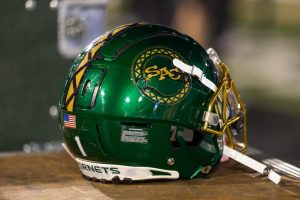Getting an athlete back in the game
December 3, 2009
Although usually frustrating for most student-athletes, injuries are bound to happen. Whether the injury occurs in practice or in a game, athletes risk their bodies every day.
Sacramento State’s athletic trainers help athletes maintain a level of competitiveness necessary to stay healthy and compete in collegiate level sports.
Athletic trainer Heather Farwig has been on staff since she completed the Sac State’s training program three years ago.
Farwig said being an athletic trainer is a major commitment.
“My day usually starts at around 11:45 (a.m.),” Farwig said. “Myself, as well as others, have a lot of things to take care of to start the day. We set up each personal athlete’s rehab treatments, we work directly with orthopedic surgeons to set up appointments and we travel with different teams – it is a lot of work.”
Farwig said the process of completing the training program requires long hours as an intern, and hands-on experience. Sac State’s training program requires that students have an internship and work supervised hours inside the athletic training center.
“As an undergrad student in the program, it is a requirement for students to get hands-on experience. We share this room with the kinesiology department because a lot of classes come in to further understand how to operate as an athletic trainer and to observe,” Farwig said. “Students usually put in about 15-20 mandatory hours outside of class per week.”
Farwig said her undergrad experience as an aspiring athletic trainer was tough, but its reward outweighed the long hours.
“It’s difficult to juggle being a student, too. For athletic trainers, the biggest thing is time management. Whether you’re traveling with a team or putting in a lot of hours, you still have to find time for school,” Farwig said. “If that means I have to get Starbucks and stay up all night for homework, I will – my job, though, is to help athletes be athletes and make sure they can do the sport that they love.”
Melissa Bartholomew said as an athletic trainer, every day is different. The only sure thing is her set schedule and the practice and game schedules of the student-athletes – everything else happens without warning.
At any given time an athlete can come in to get an ankle taped, need ice for a knee injury or get an ultrasound for a potentially damaged shoulder.
Next year, athletic training will be offered as its own major separate from the kinesiology department. The departure from the kinesiology department will give students who are interested in athletic training more experience.
Athletic training program coordinator Doris Flores said this change is long past due.
“We are so excited to have athletic training as its own major. We’ve worked very hard for it and it’s now coming true,” Flores said.
This means Bartholomew will graduate with a degree in athletic training instead of kinesiology. She is thrilled that her degree will show her specific focus. Although she puts in more hours than required, Bartholomew said the experience will help with her career.
“It’s hard sometimes to do so much, and put so much work into something for no pay,” Bartholomew said. “But, at the end of the day, this is what I want to do as my career – I look at it as an experience that will help me with my long term goals.”
Britney Rossman can be reached at [email protected]




























































































































